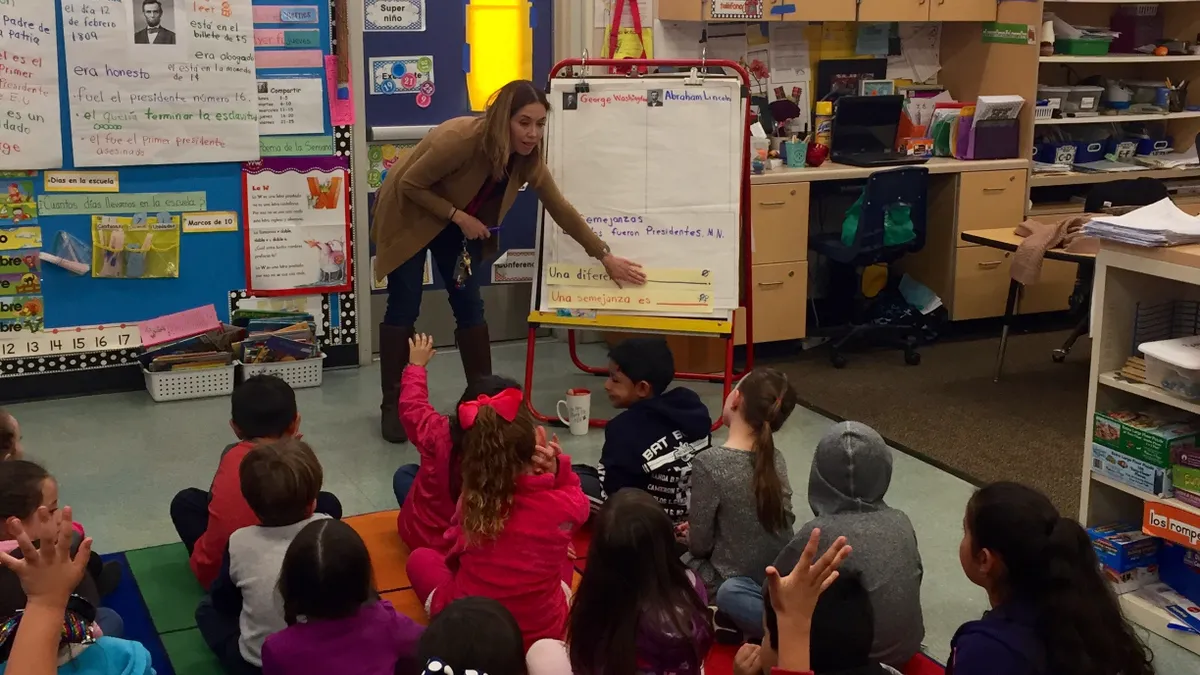Dive Brief:
- Many of the nation’s 5 million English language learners lost English instruction time when schools shifted to remote learning. In preparation for fall, some districts are considering hybrid approaches that combine online education with limited in-person class time for ELLs, Chalkbeat reports.
- After two months of school closures, the U.S. Department of Education issued guidance last week clarifying schools must continue to provide as much support as possible to English learners during the pandemic. If distance learning does continue into the fall, some teachers want to increase language development instruction despite the constraints of the online model.
- English language learners are also at a disadvantage when it comes to distance learning because they are more likely to use phones to access school assignments at home. When ELLs miss out on language development, they also struggle in other classes that are taught in English, particularly without teachers explaining assignments in person.
Dive Insight:
Coronavirus-induced school closures have condensed language classes and robbed students of the opportunity to regularly practice their non-native languages. The closures have been particularly difficult for dual immersion programs, which teach both English learners and native speakers in a single class in an attempt to build proficiency in two languages.
José Medina, an educational consultant and expert on dual language immersion programs, recommends continuing the in-school language mix model even while online. If the class has been practicing a 50/50 mix, educators should continue to provide half of the instruction in each language.
There are ways students can continue to listen to their non-native language even when they are at home. For example, language learners can watch television in the non-native language. Medina also recommends classes start where they finished in-class learning. So if a class was being taught in 10% English and 90% Spanish, he recommends restarting in fall at the same mix instead of attempting to skip ahead to a higher percentage of English.
Educators must also ensure ELLs continue to feel included during school closures. That may be connecting one-on-one by phone with each student or sending links to the cell phones of students who lack a computer or internet access. Some teachers are also hosting Sunday video chats.
The ELL site Colorín Colorado urges educators to assess what students need, and what they already have, for distance learning both on and offline. They should then establish a structure similar to an in-class lesson, determining and narrowing down what they want to teach students and then setting up a dashboard with those goals. They should also build in activities that require students to use English, both through video and writing.












